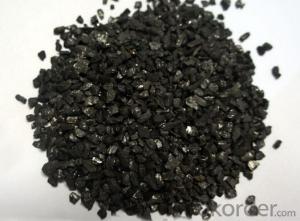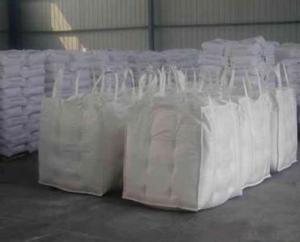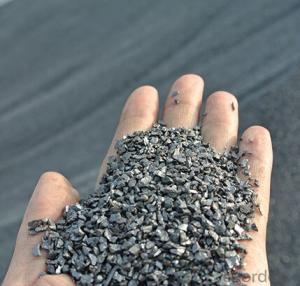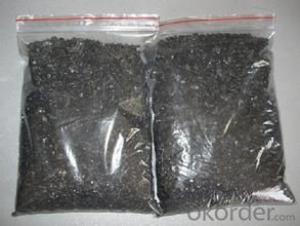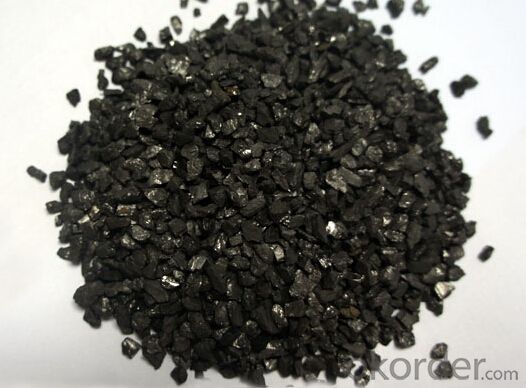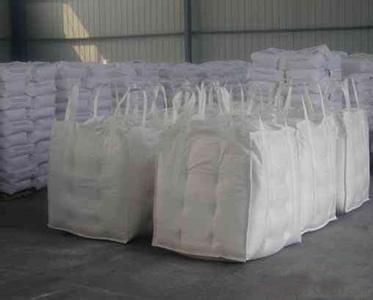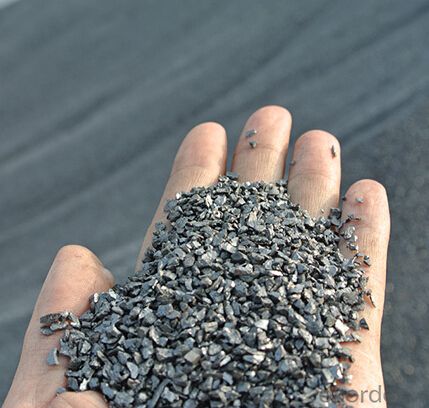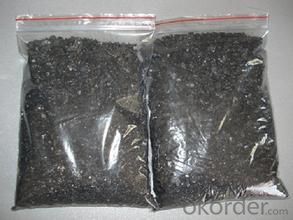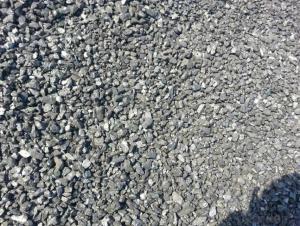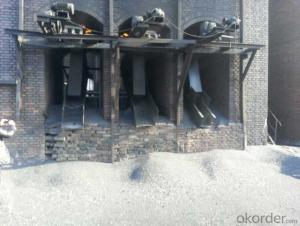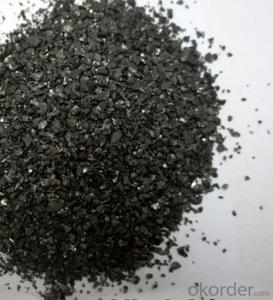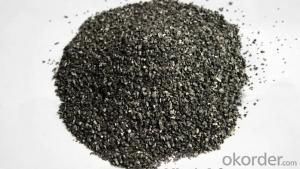Recarburizer 5-8mm 90% FC Carburant Carbon Additives
- Loading Port:
- Qingdao
- Payment Terms:
- TT OR LC
- Min Order Qty:
- 10 m.t.
- Supply Capability:
- 50000 m.t./month
OKorder Service Pledge
OKorder Financial Service
You Might Also Like
Specifications Of Recarburizer 90% FC
- High C content;
- Low S and N content;
- High abosorbility;
Recarburizer(Carburant, carbon additives) with high quality,0-20mm for metal casting foundry and steel plant, low nitrogen content and high carbon content, min 90% carbon content, at the same time as your requirements with no problem. The best media for adding carbon.
Technical Data Sheet of Recarburizer 90% FC
Fixed carbon | ≥ 90.5% |
Ash content | ≤ 8.0% |
Vol . Matter | ≤ 1.0% |
Sulphur content | ≤ 0.3% |
Moisture content | ≤ 0.3% |
Size | 0-20mm or as your requirement. |
Packing | - 25kg bag - One tone bags, Jumbo bag |
Delivery time | In 5-10 working days or depends on the order quantity |
Supply ability | 50000 Metric Ton Per Month |
Payment terms | L/C at sight or T/T |
Available Size: 0,1-4mm, 1-5mm, 3-8mm, 8-20mm (as per customers’ requirements)
Usage: widely used in casting foundry, steel-making, metallurgical Etc.
Applications of Recarburizer 90% FC
Mainly used in steel making in electrical stove, screening water, ship building sandblast to remove rust,producing carbon materials Etc.
Characteristics of Recarburizer 90% FC
- Particle size, porosity, absorption speed stable
- High degree of carbonize product, increase the original nuclear capability in the shape of liquid iron.
- Increased in the inoclation of nodular cast iron ball ink quantiyt, increase in th electric furnace iron graphit crystal nucleus.
- Excellent performance, stable.

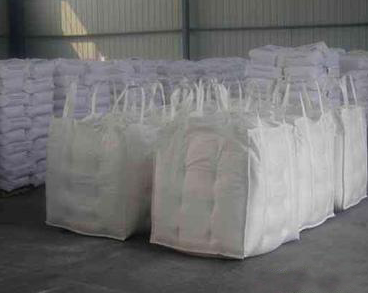
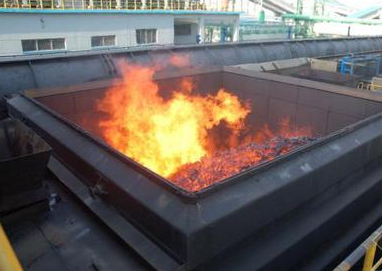
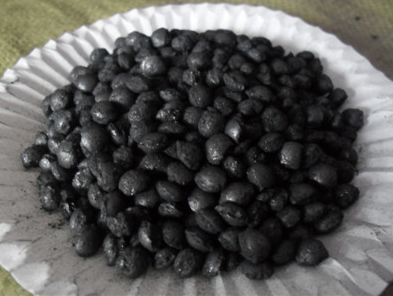
- Q: What is the carbon content of different types of rocks?
- The carbon content of different types of rocks varies significantly. Generally, sedimentary rocks such as limestone and shale contain higher carbon content due to their formation from organic matter. Igneous and metamorphic rocks, on the other hand, typically have lower carbon content as they are formed from molten material and intense heat and pressure, respectively.
- Q: What are the impacts of carbon emissions on the stability of deserts?
- Carbon emissions have significant impacts on the stability of deserts. One of the key consequences is the exacerbation of desertification, which refers to the process of fertile land turning into desert due to various factors, including climate change. Carbon emissions contribute to global warming, leading to higher temperatures and increased evaporation rates, which in turn result in reduced soil moisture and increased aridity in desert regions. This intensifies the process of desertification, causing deserts to expand and become more unstable. Furthermore, carbon emissions contribute to the alteration of precipitation patterns, which directly affects the stability of deserts. As climate change leads to shifts in weather patterns, some areas may experience reduced rainfall, while others may face more frequent and intense droughts. These changes in precipitation can further exacerbate desertification processes and lead to increased desert instability. Another impact of carbon emissions on desert stability is the increased frequency and intensity of dust storms. As global warming leads to drier conditions and reduced vegetation cover, the risk of dust storms becomes higher. These storms can transport vast amounts of fine particulate matter, including dust and sand, over long distances, resulting in a range of negative consequences. Dust storms can damage infrastructure, harm human health, degrade air quality, and further contribute to desertification processes by removing fertile topsoil. Additionally, the impacts of carbon emissions on deserts are not limited to their ecological stability but also have socio-economic implications. Many communities in desert regions rely on agriculture and natural resources for their livelihoods. The destabilization of deserts due to carbon emissions can lead to reduced agricultural productivity, increased food insecurity, and economic hardship for these communities. Moreover, the displacement of people from desert regions due to desertification can lead to increased migration and social instability. In conclusion, carbon emissions have far-reaching impacts on the stability of deserts. They contribute to the intensification of desertification processes, alter precipitation patterns, increase the frequency and intensity of dust storms, and have socio-economic consequences. Addressing carbon emissions through climate change mitigation strategies is crucial to minimize these impacts and ensure the long-term stability of desert ecosystems and the communities that depend on them.
- Q: What are the consequences of increased carbon emissions on cultural heritage sites?
- Increased carbon emissions can have severe consequences on cultural heritage sites. The most immediate impact is climate change, which leads to rising sea levels, more frequent and intense natural disasters, and changes in temperature and precipitation patterns. These changes can directly damage or destroy cultural heritage sites, including archaeological sites, historic buildings, and monuments. Additionally, increased carbon emissions contribute to air pollution, leading to acid rain and atmospheric pollutants that can erode and deteriorate cultural artifacts. Furthermore, climate change can disrupt local communities and economies that depend on these heritage sites for tourism, resulting in a loss of cultural identity and economic decline. Overall, the consequences of increased carbon emissions on cultural heritage sites are both tangible and intangible, threatening our shared history and cultural diversity.
- Q: What are the implications of melting permafrost on carbon emissions?
- The melting of permafrost has significant implications on carbon emissions. Permafrost contains large amounts of organic matter, such as dead plants and animals, which have been frozen and stored for thousands of years. When permafrost thaws, this organic matter decomposes and releases carbon dioxide and methane, two potent greenhouse gases. These greenhouse gases further contribute to global warming, exacerbating climate change. Additionally, the release of carbon from melting permafrost creates a positive feedback loop, as increased global temperatures lead to more permafrost thawing, causing even more carbon emissions. This highlights the urgent need to address permafrost melting as part of efforts to mitigate climate change.
- Q: How much is a ton of carbon fiber? How much difference is made between domestic and imported?
- To 12K carbon fiber, for example, domestic prices between 16~17 million, imports of Dongli carbon fiber prices between 27~29 million.
- Q: How does carbon affect the water cycle?
- Carbon affects the water cycle in several ways. Firstly, carbon plays a crucial role in the atmosphere, where it exists in the form of carbon dioxide (CO2). The concentration of CO2 in the atmosphere has been increasing due to human activities such as burning fossil fuels, deforestation, and industrial processes. This increase in carbon dioxide levels leads to global warming and climate change, which in turn affects the water cycle. One major impact of increased carbon dioxide is the alteration of precipitation patterns. Warmer temperatures caused by carbon emissions can lead to more evaporation from bodies of water, resulting in increased water vapor in the atmosphere. This extra moisture can then lead to more intense rainfall in some areas, causing floods, while other regions may experience droughts as evaporation rates exceed precipitation rates. These changes in precipitation patterns disrupt the balance of the water cycle, affecting the availability of water resources for both human and natural systems. Furthermore, carbon dioxide dissolved in water forms carbonic acid, which lowers the pH level of oceans and bodies of water, a process known as ocean acidification. This acidification can negatively impact marine life, including shellfish, corals, and other organisms that rely on calcium carbonate to build their shells or skeletons. As a result, the disruption of these species can have cascading effects through the food chain, ultimately impacting the entire ecosystem. Carbon also influences the melting of polar ice caps and glaciers. Rising global temperatures caused by increased carbon emissions accelerate the melting process. As the ice melts, it releases freshwater into the oceans, leading to a rise in sea levels. This rise in sea levels can have devastating consequences for coastal communities, increasing the risk of flooding and erosion. In summary, carbon emissions, primarily in the form of carbon dioxide, have a significant impact on the water cycle. They alter precipitation patterns, contribute to ocean acidification, and accelerate the melting of ice, all of which disrupt the delicate balance of the water cycle and have far-reaching consequences for ecosystems and communities around the world.
- Q: What is the concept of carbon equivalent? What is the relationship between carbon equivalent and weldability?
- There are a lot of carbon equivalent indexes such as tensile strength, yield strength of carbon equivalent, carbon equivalent, welding carbon equivalent, and crack sensitivity index (which is essentially carbon equivalent).
- Q: What are the properties of carbon-based rubber?
- Carbon-based rubber, known also as carbon black-filled rubber, possesses a range of important properties that make it highly desirable for a variety of applications. To begin with, carbon-based rubber demonstrates excellent elasticity and flexibility, enabling it to endure repeated stretching and compression without permanent deformation. This particular quality renders it ideal for the manufacturing of products like tires, gaskets, and seals. Moreover, carbon-based rubber exhibits exceptional resistance to abrasion and wear, ensuring its longevity even in harsh conditions and with prolonged use. This attribute proves particularly advantageous in applications where the rubber material experiences friction or constant contact with rough surfaces. Additionally, carbon-based rubber showcases remarkable resistance to various environmental factors. It boasts excellent resistance to ozone, sunlight, and weathering, making it suitable for outdoor applications where exposure to UV radiation and extreme temperatures is expected. Its resistance to chemicals and oils further enhances its versatility, enabling its use in industries such as automotive, aerospace, and manufacturing. Another notable property of carbon-based rubber is its electrical conductivity. This characteristic renders it an ideal material for applications that necessitate static dissipation or protection against electrostatic discharge, such as in electronic devices, conveyor belts, and industrial flooring. Furthermore, carbon-based rubber displays good adhesion to various substrates, allowing it to form strong bonds when employed in adhesive applications or as a lining material. Overall, the exceptional elasticity, abrasion resistance, environmental resistance, electrical conductivity, and adhesion capabilities of carbon-based rubber contribute to its status as a highly sought-after material.
- Q: How is carbon used in the production of nanotubes?
- Due to its distinctive characteristics and its capacity to establish robust covalent bonds, carbon is widely utilized in the manufacturing of nanotubes. Nanotubes are cylindrical arrangements composed entirely of carbon atoms that are organized in a hexagonal lattice. Two primary methods are employed to produce nanotubes: arc discharge and chemical vapor deposition (CVD). In the arc discharge technique, a high voltage is applied in an inert gas environment, causing a plasma arc of high temperature to form between two graphite electrodes. This arc vaporizes the carbon source material, and as the vaporized carbon atoms cool down, they condense and align themselves into nanotubes. This process enables the controlled creation of multi-walled carbon nanotubes (MWCNTs), which consist of concentric tubes nested within each other. On the contrary, chemical vapor deposition involves the decomposition of carbon-containing gases, such as methane or ethylene, on a catalyst surface at elevated temperatures. The catalyst, typically composed of transition metals like iron, nickel, or cobalt, facilitates the growth of nanotubes by providing active sites for carbon atoms to attach and form tubular structures. Depending on the reaction conditions, the resulting nanotubes can be either single-walled (SWCNTs) or multi-walled. In both methods, carbon serves as an essential building block. Its exceptional carbon-carbon bonding nature enables the creation of sp2 hybridized carbon atoms, resulting in a sturdy and stable lattice structure. This structure imparts nanotubes with outstanding mechanical, electrical, and thermal properties, making them highly sought after in various fields such as electronics, materials science, and medicine. Additionally, carbon's versatility allows for the production of functionalized nanotubes by incorporating other elements or molecules into their structure. This is accomplished through chemical modification of the carbon framework, which permits the attachment of diverse functional groups or nanoparticles. Functionalized nanotubes can exhibit improved properties or be customized for specific applications, further underscoring the significance of carbon in nanotube production. In conclusion, carbon plays a crucial role in the production of nanotubes, owing to its unique properties, ability to form strong covalent bonds, and versatility. It serves as the ideal building block for creating these remarkable structures with a wide range of applications.
- Q: How do you make your own carbon fiber bar?Know. ID is how to make? Don't copy anything that has nothing to do with it
- 4. application development, at present, various applications for carbon fiber annual demand ratio is as follows: sports applications of about 30%, aviation applications for 10%, industrial applications for 60%. Three important applications in sports are the golf club, fishing rod and tennis racket frame. At present, it is estimated that the annual output of big bat is 34 million. According to the national geographic classification, these big clubs are mainly made in the United States, China, Japan and Taipei, China, and the United States and Japan are the main consumer of golf clubs, accounting for more than 80%. 40% of the carbon fiber balls in the world are made from carbon fiber of TORAY. Carbon fiber fishing rods around the world produce about 20 million pairs a year, which means this application has a steady demand for carbon fiber. The market capacity of tennis racket frames is about 6 million pairs per year. Other sports applications include hockey sticks, ski sticks, archery, and bicycles, while carbon fiber is also used in rowing, rowing, surfing, and other marine sports. In 1992, the airline's demand for carbon fiber began to decline, mainly due to the decline of the commercial aircraft industry, but it recovered rapidly in the early 1995. The main reason for the recovery is that the overall efficiency of the production has been improved, but also began to fully produce Boeing 777 aircraft, TORAY carbon fiber has been used
Send your message to us
Recarburizer 5-8mm 90% FC Carburant Carbon Additives
- Loading Port:
- Qingdao
- Payment Terms:
- TT OR LC
- Min Order Qty:
- 10 m.t.
- Supply Capability:
- 50000 m.t./month
OKorder Service Pledge
OKorder Financial Service
Similar products
Hot products
Hot Searches
Related keywords
